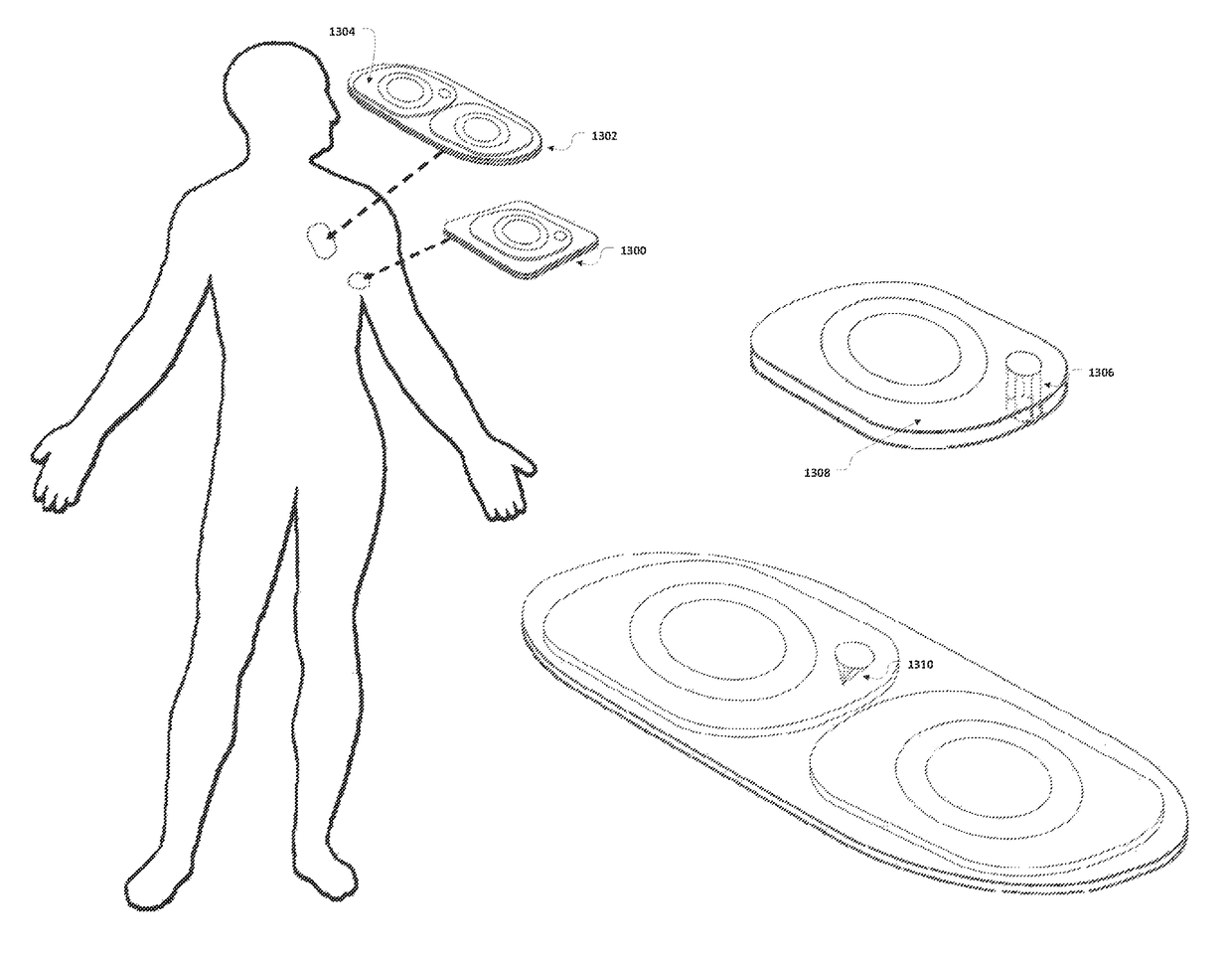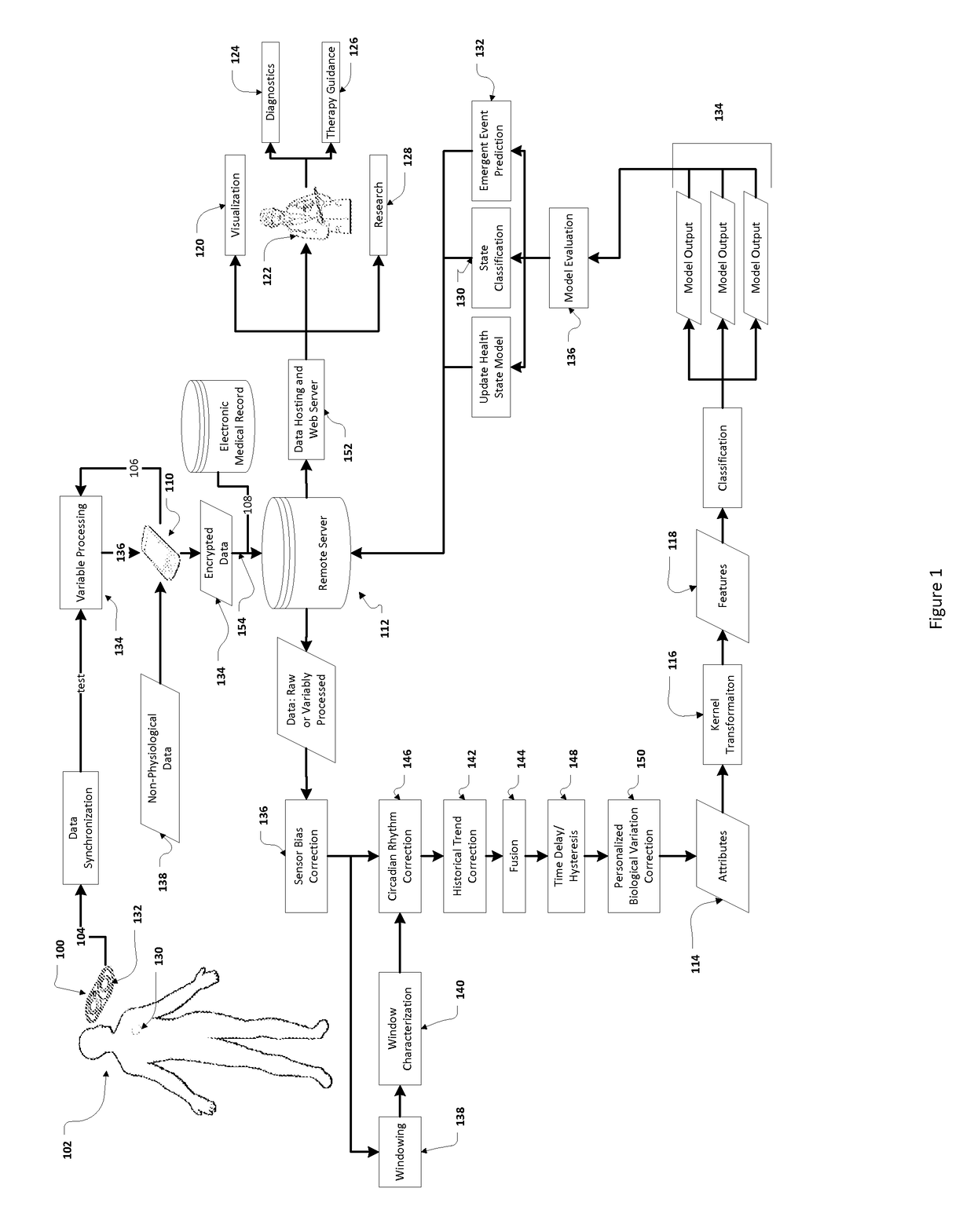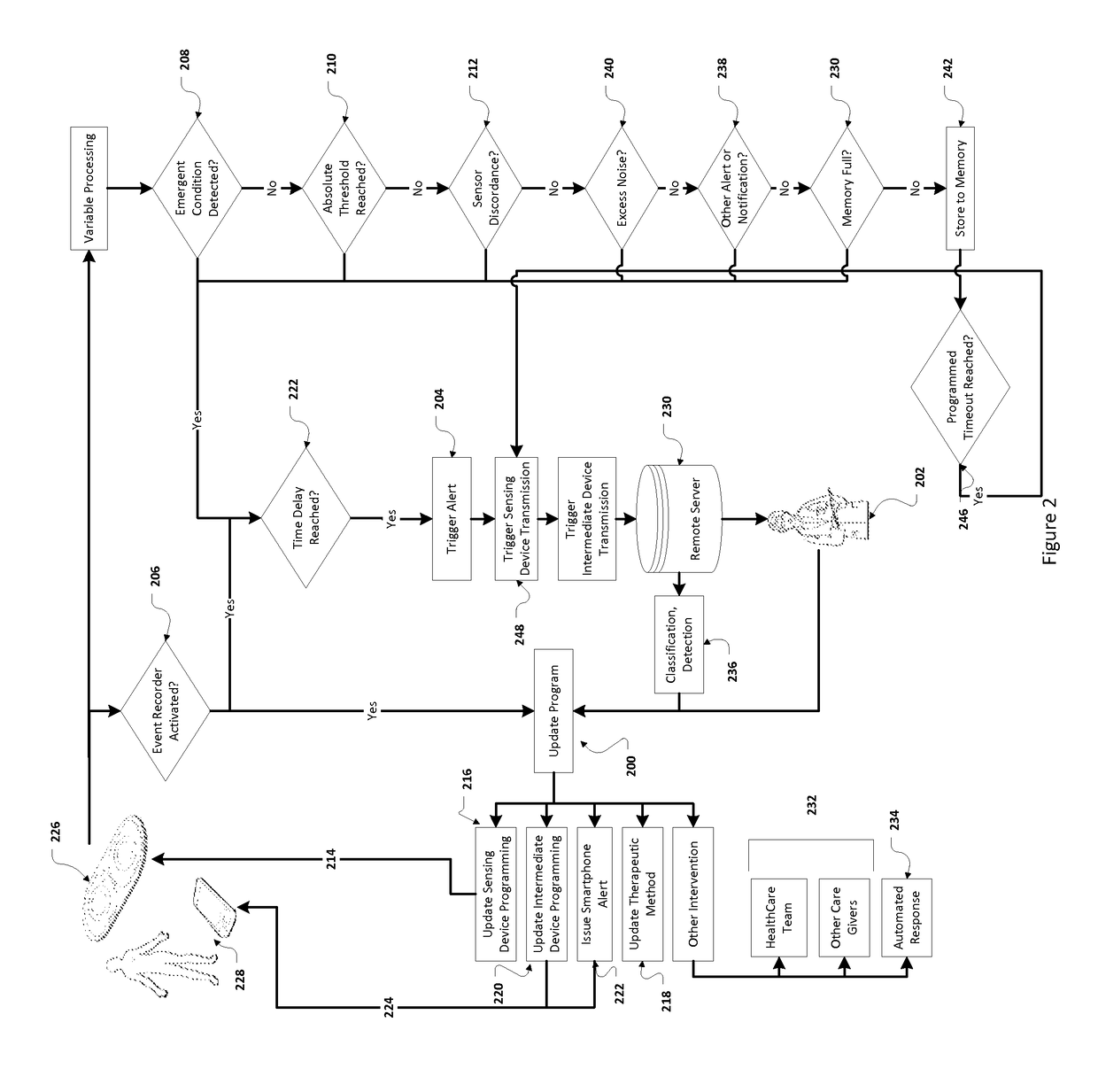Method and apparatus for wireless health monitoring and emergent condition prediction
a wireless health monitoring and emergent condition technology, applied in the field of wireless health monitoring and emergent condition prediction, can solve the problems of limited longitudinal monitoring methods or unreliable detection, poor patient compliance, and low patient satisfaction, so as to improve patient compliance, improve diagnostic accuracy and patient compliance, and increase the predictive power of specialized hardware sensors
- Summary
- Abstract
- Description
- Claims
- Application Information
AI Technical Summary
Benefits of technology
Problems solved by technology
Method used
Image
Examples
Embodiment Construction
[0030]Embodiments of the present invention offer a method, system, and device for non-invasive physiological sensing for monitoring of health or disease state and prediction of emergent conditions, such as to allow for intervention or other preventive measures to be taken.
[0031]An important aspect of the present invention is the simultaneous and coincident recording by a plurality of sensors for use in fusion and correlation of physiologically distinct phenomena, FIG. 1. This allows for enhanced characterization of a patient's state of health and may reveal subtle changes in physiology or systems physiology in response to everyday activity that may not be apparent from independently sensed quantities. This is accomplished by specializing algorithms to the characteristics and biases of the recording device 100, such as a multisensor adherent patch, adhered to a patient 102 to construct attributes 114 from raw, fused, corrected, or otherwise processed sensor outputs 104 that may be ma...
PUM
 Login to View More
Login to View More Abstract
Description
Claims
Application Information
 Login to View More
Login to View More - R&D
- Intellectual Property
- Life Sciences
- Materials
- Tech Scout
- Unparalleled Data Quality
- Higher Quality Content
- 60% Fewer Hallucinations
Browse by: Latest US Patents, China's latest patents, Technical Efficacy Thesaurus, Application Domain, Technology Topic, Popular Technical Reports.
© 2025 PatSnap. All rights reserved.Legal|Privacy policy|Modern Slavery Act Transparency Statement|Sitemap|About US| Contact US: help@patsnap.com



